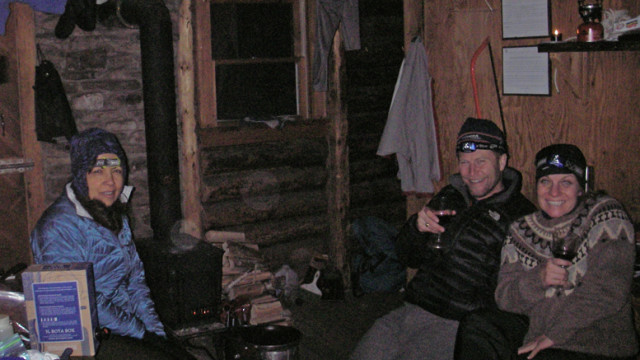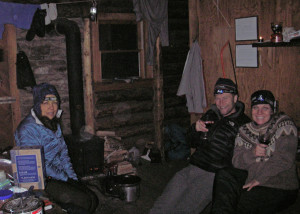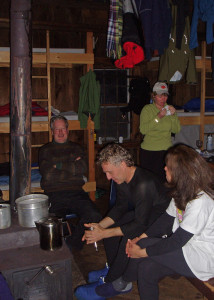Use this Winter Cabin Checklist to make sure you have everything you need to keep you warm, comfortable, and well-fed on your next winter cabin adventure. It’s set up for a two-night getaway but the basic gear is the same if you are going for one night or two weeks. If you’d like a printer-friendly copy of this list, just email me.
FOOD
Day 1:
Breakfast (before leaving trailhead)
Lunch/trail snacks:
Appetizers:
Dinner :
Day 2:
Breakfast:
Lunch/trail snacks:
Appetizers:
Dinner:
Day 3:
Breakfast:
Lunch/trail snacks
Gear, common:
Stove/fuel (Note some cabins are equipped with a stove, some aren’t. Somedo not allow white gas stoves but do allow propane or butane canister stoves) Make sure you check for your specific cabin.
Nesting pots
Large pots (for melting snow, heating water)
Fry pan
Tea pot
Percolator or coffee press
Lanterns:
gas/fuel
battery/spares
Matches/Lighters
Paper Towels
First Aid Kit
Emergency Kit
Shovel (some cabins supply)
Hatchet (for splitting kindling–some cabins supply)
firestarters
Air Grill Blower (very handy for starting a woosdtove)
CLOTHING
Underwear (not cotton)
Long underwear (Polyester or wool not cotton )
Extra socks (wool or polyester, not cotton)
Slippers or insulated booties (so we don’t track our snowy boots into the cabin)
Insulation layers (suggest multiple layers of fleece or wool and a lightweight “puffy” jacket)
Outer shell pants and jacket [Note no matter how cold it is, you are likely to overheat while snowshoeing in, especially carrying a big pack. Layers of insulation and a shell are more versatile than an insulated parka and pants.]
Light gloves (for snowshoeing in and to wear in the cabin if you are cold)
Boots appropriate for snowshoeing (insulated is nice, heavy isn’t)
Gaiters (not absolutely necessary but nice if you have them!)
Neckwarmer, scarf or face mask (you’ll want it if the wind is blowing)
Bandana (use it as a potholder and towel)
Backpack or Pulk or both. Make sure it’s big enough for all personal gear and clothing plus some common gear/food.
Waterproof stuff sack for extra clothing
Water, 2 quarts minimum for hike in (cold air dehydrates rapidly).
Snowshoes/skis/creepers (depending on snow conditions–remember, conditions coming out may be very different than conditions going in
Ski or trekking poles
Headlamp
Knife, fork, spoon, cup, plate, bowl
Sunglasses
Sunscreen
Toilet paper/baby wipes
Cell phone (for emergency use only . . .)
Toothbrush/floss
Book/reading glasses (some of us are getting OLD)
map and compass
Medications
SLEEPING
Sleeping bag [Note that some cabins have a woodstove which may or may not keep the place warm–be prepared for cold]
Sleeping pad (closed cell foam for insulation)
Self inflating air mattress (for comfort on hard wooden bunks)
Pillow and pillowcase, as desired
Hat, clean/dry longies and socks (to wear inside sleeping bag)
Earplugs (in case someone snores)





